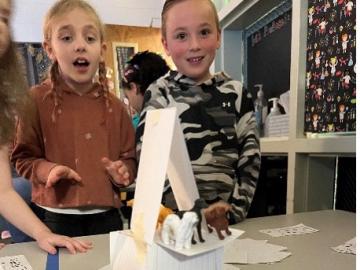
Filter News
Area of Research
- (-) National Security (45)
- (-) Nuclear Science and Technology (27)
- (-) Supercomputing (153)
- Advanced Manufacturing (5)
- Biological Systems (1)
- Biology and Environment (102)
- Biology and Soft Matter (4)
- Building Technologies (2)
- Chemical and Engineering Materials (3)
- Chemistry and Physics at Interfaces (7)
- Clean Energy (168)
- Climate and Environmental Systems (7)
- Computational Biology (1)
- Computational Chemistry (5)
- Computational Engineering (1)
- Computer Science (3)
- Data (1)
- Earth Sciences (1)
- Electricity and Smart Grid (1)
- Energy Frontier Research Centers (7)
- Fuel Cycle Science and Technology (2)
- Functional Materials for Energy (8)
- Fusion and Fission (32)
- Fusion Energy (7)
- Geographic Information Science and Technology (1)
- Isotopes (21)
- Materials (122)
- Materials for Computing (13)
- Materials Synthesis from Atoms to Systems (8)
- Materials Under Extremes (7)
- Neutron Data Analysis and Visualization (2)
- Neutron Science (72)
- Quantum Condensed Matter (3)
- Quantum information Science (4)
- Renewable Energy (2)
- Sensors and Controls (2)
- Transportation Systems (4)
News Type
News Topics
- 3-D Printing/Advanced Manufacturing (5)
- Advanced Reactors (4)
- Artificial Intelligence (25)
- Big Data (15)
- Bioenergy (4)
- Biology (8)
- Biomedical (7)
- Biotechnology (2)
- Buildings (2)
- Chemical Sciences (1)
- Climate Change (15)
- Computer Science (49)
- Coronavirus (8)
- Cybersecurity (8)
- Decarbonization (4)
- Energy Storage (1)
- Environment (16)
- Exascale Computing (12)
- Frontier (13)
- Fusion (6)
- Grid (4)
- High-Performance Computing (22)
- Isotopes (2)
- Machine Learning (13)
- Materials (5)
- Materials Science (11)
- Mathematics (1)
- Microscopy (2)
- Molten Salt (1)
- Nanotechnology (5)
- National Security (23)
- Net Zero (1)
- Neutron Science (7)
- Nuclear Energy (19)
- Physics (4)
- Quantum Computing (10)
- Quantum Science (11)
- Security (6)
- Simulation (10)
- Software (1)
- Space Exploration (2)
- Summit (21)
- Sustainable Energy (3)
- Transformational Challenge Reactor (2)
- Transportation (3)
Media Contacts

A team of researchers from ORNL was recognized by the National Cancer Institute in March for their unique contributions in the fight against cancer.

Using disinformation to create political instability and battlefield confusion dates back millennia. However, today’s disinformation actors use social media to amplify disinformation that users knowingly or, more often, unknowingly perpetuate. Such disinformation spreads quickly, threatening public health and safety. Indeed, the COVID-19 pandemic and recent global elections have given the world a front-row seat to this form of modern warfare.

Oak Ridge National Laboratory, in partnership with the National Oceanic and Atmospheric Administration, is launching a new supercomputer dedicated to climate science research. The new system is the fifth supercomputer to be installed and run by the National Climate-Computing Research Center at ORNL.

ORNL has named Prasanna Balaprakash to direct its artificial intelligence efforts. The laboratory’s AI Initiative coordinates efforts across its varied research directorates to harness the power of AI and data science in tackling some

Four nuclear nonproliferation staff members from the Department of Energy’s Oak Ridge National Laboratory were recognized as part of the 2021 Outstanding Security Team awarded by the Secretary of Energy for contributions to the Material Control and Accountability Technical Qualification Program Pilot.

Nine engineers from ORNL visited 10 elementary and middle school classrooms in three school districts during National Engineers Week, Feb. 21 to 24, 2023, describing and demonstrating the excitement of the engineering profession to more than 300 Tennessee students.

Stephen Dahunsi’s desire to see more countries safely deploy nuclear energy is personal. Growing up in Nigeria, he routinely witnessed prolonged electricity blackouts as a result of unreliable energy supplies. It’s a problem he hopes future generations won’t have to experience.
The Autonomous Systems group at ORNL is in high demand as it incorporates remote sensing into projects needing a bird’s-eye perspective.

A team of researchers from ORNL has created a prototype system for detecting and geolocating damaged utility poles in the aftermath of natural disasters such as hurricanes.

Ben Thomas recalled the moment he, as a co-op student at ORNL, fell in love with computer programming. “It was like magic.” Almost five decades later, he strives to bring the same feeling to students through education and experience in fields that could benefit nuclear nonproliferation.


